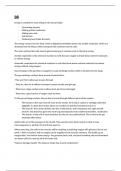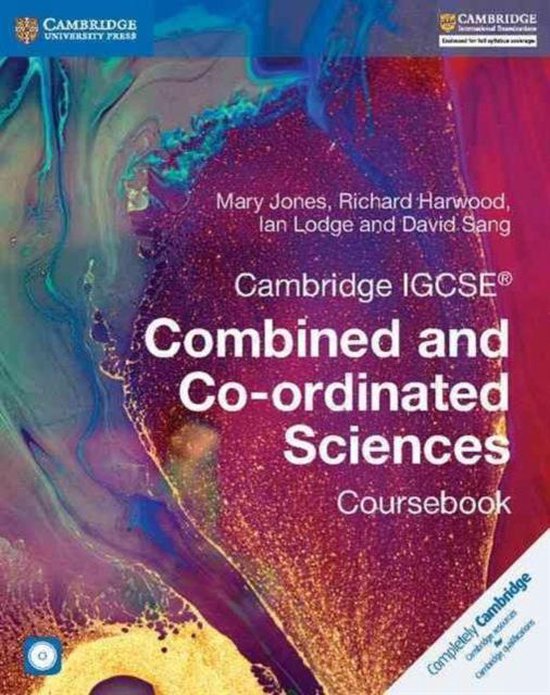B8
Energy is needed for many things in the human body:
- Contracting muscles
- Making protein molecules
- Making new cells
- Cell division
- Producing heat inside the body
The energy comes from the food, which is digested and broken down into smaller molecules, which are
absorbed into the blood, which transports the nutrients into the cells.
The main nutrient that cells need is glucose because it contains a lot of chemical energy.
Aerobic respiration is the chemical reactions in cells that use oxygen to break down nutrient molecules
to release energy.
Anaerobic respiration the chemical reactions in cells that break down nutrient molecules to release
energy without using oxygen.
Gas exchange is the gas that is swapped on a gas exchange surface which is located into the lungs.
The gas exchange surfaces have several characteristics:
-They are thin to allow gas to pass through
- They are close to an efficient transport system to take and give gas
- They have a large surface area to allow more gas to be exchanged
- They have a good source of oxygen close to them.
To the gas exchange surface, the gas has to travel through different parts of the system:
- The trachea is the way from the nose to the mouth. At its top is a piece of cartilage called the
epiglottis. It closes the trachea when you swallow so that the food doesn’t go in it.
- The bronchi. The trachea divides into two in the thorax, and it separates into right and left
bronchi. One bronchus goes into each lung and separates into smaller bronchioles, small tubes.
- The alveoli. At the end of each bronchus are tiny air sacs called alveoli. This is where the gas
exchange takes place.
Goblet cells are in the passages to the alveoli. They secrete some sticky mucus to stick to trap
microorganisms or particles of dust if they pass by.
When exercising, the cells in the muscles will be respiring (combining oxygen with glucose). But at one
point, a limit is reached, and no oxygen can be supplied to the muscles anymore. This builds up an
oxygen debt. You borrow some energy. You generate lactic acid, and your breathing rate and heartbeat
are faster until you used up all of the lactic acid.
Tobacco damages health. The tobacco smoke has several components:
, - Nicotine. It makes the user addicted.
- Tar. It is a carcinogen (causes cancer).
- Carbon monoxide. It is a deadly gas that reduces the amount of oxygen that the blood can carry.
- Smoke particles. Little particles of carbon and other elements that may result into COPD.
B9
Changes in the environment of an organism are called stimuli, and they are sensed by specialized cells
called receptors. The organism responds using effectors.
Animals need fast and efficient communication systems between their receptors and effectors. The
human nervous system is made of neurons. Neurons contain the same basic parts as any animal cell.
Each has a nucleus, cytoplasm, and a cell membrane, but their structure is specially adapted to be able to
carry signals very quickly. To enable them to do this, they have fibers of cytoplasm sticking out from the
cell body called dendrites, and then longest one is called axon. Dendrites pick up the electrical signals
from the other neurons close to them. These signals are called nerve impulses. The signal pass to the cell
body, then to the axon, and then might be passed to another neuron. All mammals have a central
nervous system and a peripheral nervous system. The CNS is made up of the brain and the spinal cord.
The PNS is made up of the nerves and receptors. CNS is made up neurons, and its role is to coordinate
the information travelling through the nervous system. When a receptor detects a stimulus, it sends an
electrical impulse to the CNS. The CNS receives it and sends an impulse on, along the appropriate nerve
fibers, to the appropriate effector.
When you feel something, the receptor generates a nerve impulse, which travels to the spinal cord along
the axon of a sensory neuron. It is then passed to the relay neuron, then to the motor neuron. Finally, it
is transmitted to the effector. This sort of reaction is called a reflex action. A reflex action is a means of
automatically and rapidly integrating and coordinating stimuli with the responses of effectors.
A sensory neuron has its cell body along its axon.
A motor neuron has its cell body surrounded by the dendrites.
A relay neuron has no axon.
A reflex action is an example of an involuntary action, though most of our actions are voluntary.
The eye is a receptor organ. Its function is to detect light, and to transfer the energy in the light to
electrical energy in a nerve impulse.
The part of the eye that contains the receptor cells is the retina. This is the part which is actually
sensitive to light. The rest of the eye simply helps to protect the retina or to focus light onto it.





